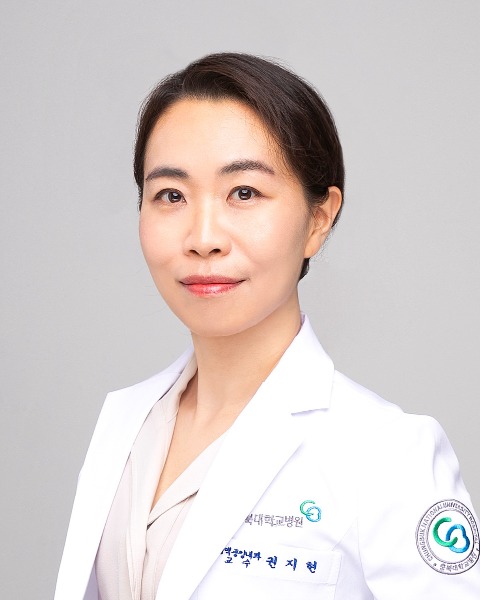Treatment of Newly Diagnosed Myeloma - Non-Transplant Eligible
Poster Session 1
P-119: The role of lenalidomide-dexamethasone therapy in elderly patients with multiple myeloma in clinical practice: comparison with bortezomib-based therapy
Wednesday, September 27, 2023
1:30 PM - 2:30 PM EEST

Jihyun Kwon, PhD
Professor
Chungbuk National University College of Medicine
Cheongju-si, Republic of Korea
Introduction: No clinical trials have directly compared the continuous use of lenalidomide plus dexamethasone (Rd) with a fixed-duration treatment using proteasome inhibitors. In this study, we aimed to identify the role of Rd and proteasome inhibitor-based therapies as frontline treatments for elderly patients with multiple myeloma (MM).
Methods: We collected and retrospectively analyzed the clinical data of 78 patients with MM who were ineligible for autologous hematopoietic stem cell transplantation (Auto-HSCT). Patients who received Rd as the first treatment were defined as group R and those who received bortezomib-based treatment were defined as group V. The primary endpoints of this study were overall survival and progression-free survival after first-line treatment.
Results: The median age was 77.1 years (range 64.4–88.7). High-risk cytogenetics were confirmed in 11 patients. Thirty-nine patients (50.0%) received bortezomib-based therapy as the first treatment and 32 (41.0%) received Rd therapy. Patients in group R were older than those in group V (median age 79.3 vs 75.2 years, P=0.003). Three patients in group V had del(17p13) with none in group R. There was no significant difference between the two groups in the distribution of risk groups according to the International Staging System (ISS) and the Revised-ISS.
The overall response rate was 74.2% in group R and 74.4% in group V (P=0.987). The time to best response was significantly shorter in group V than in group R. (6.8 vs 9.2 months, P=0.043). The median progression-free survival was 28.8 months in group R and 20.2 months in group V (P=0.042). The most common reason for treatment discontinuation in group R was treatment-related complications (15 patients, 55.6%). In group V, 15 patients (38.5%) terminated treatment according to the plan, followed by complications (12 patients, 30.8%).
Twenty-five (64.1%) patients in group V received second-line lenalidomide-based therapy, whereas only seven (21.9%) patients in group R received secondary treatment. The period from the completion of the first treatment to the start of the second treatment was 1.0 months in group R and 3.7 months in group V (P=0.042). The median progression-free survival of the second-line treatment was significantly longer in group V (22.6 months) than in group R (5.4 months) (P=0.001).
The median overall survival was 26.6 months in group R and 48.7 months in group V (P=0.010). In the multivariate analysis, significant prognostic factors were age >76 years (hazard ratio 3.398, P< 0.001) and ISS III risk group (hazard ratio 8.367, P=0.043).
Conclusions: The type of primary treatment did not affect overall survival. Rd therapy showed superior progression-free survival compared with bortezomib-based regimens, despite the relatively older age of the patients. However, it is necessary to consider the high early termination rate due to complications and disadvantages caused by short drug holiday periods.
Methods: We collected and retrospectively analyzed the clinical data of 78 patients with MM who were ineligible for autologous hematopoietic stem cell transplantation (Auto-HSCT). Patients who received Rd as the first treatment were defined as group R and those who received bortezomib-based treatment were defined as group V. The primary endpoints of this study were overall survival and progression-free survival after first-line treatment.
Results: The median age was 77.1 years (range 64.4–88.7). High-risk cytogenetics were confirmed in 11 patients. Thirty-nine patients (50.0%) received bortezomib-based therapy as the first treatment and 32 (41.0%) received Rd therapy. Patients in group R were older than those in group V (median age 79.3 vs 75.2 years, P=0.003). Three patients in group V had del(17p13) with none in group R. There was no significant difference between the two groups in the distribution of risk groups according to the International Staging System (ISS) and the Revised-ISS.
The overall response rate was 74.2% in group R and 74.4% in group V (P=0.987). The time to best response was significantly shorter in group V than in group R. (6.8 vs 9.2 months, P=0.043). The median progression-free survival was 28.8 months in group R and 20.2 months in group V (P=0.042). The most common reason for treatment discontinuation in group R was treatment-related complications (15 patients, 55.6%). In group V, 15 patients (38.5%) terminated treatment according to the plan, followed by complications (12 patients, 30.8%).
Twenty-five (64.1%) patients in group V received second-line lenalidomide-based therapy, whereas only seven (21.9%) patients in group R received secondary treatment. The period from the completion of the first treatment to the start of the second treatment was 1.0 months in group R and 3.7 months in group V (P=0.042). The median progression-free survival of the second-line treatment was significantly longer in group V (22.6 months) than in group R (5.4 months) (P=0.001).
The median overall survival was 26.6 months in group R and 48.7 months in group V (P=0.010). In the multivariate analysis, significant prognostic factors were age >76 years (hazard ratio 3.398, P< 0.001) and ISS III risk group (hazard ratio 8.367, P=0.043).
Conclusions: The type of primary treatment did not affect overall survival. Rd therapy showed superior progression-free survival compared with bortezomib-based regimens, despite the relatively older age of the patients. However, it is necessary to consider the high early termination rate due to complications and disadvantages caused by short drug holiday periods.
